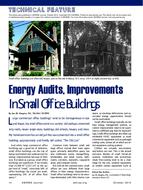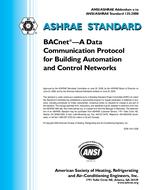Track: Tall Buildings
Sponsor: 9.12 Tall Buildings
Chair: Dennis Wessel, Ph.D., P.E., Fellow Life Member, Retired, Cleveland, OH
Stack effect in tall buildings is caused by the combination of the building height and buoyancy of air caused by temperature difference between inside and outside. Stack effect causes convective air flow in tall buildings and when combined with wind forces, elevator piston effects, and internal airflow path resistance of building elements, the associated pressure differences can cause detrimental effects or can potentially assist natural ventilation possibilities. This seminar discusses issues, both positive and negative, caused by stack effect in tall, super tall and mega tall buildings for select cities around the world.
1. Methods to Mitigate Stack Effect in Supertall and Megatall Buildings
Mehdi Jalayerian, P.E., Member, ESD, Chicago, IL
Stack effect is movement of air in buildings due to air buoyancy caused by indoor/outdoor temperature. Uncontrolled airflow and pressure related to stack effect always exists but is exacerbated by outdoor ambient conditions and building height/configuration. This presentation provides a parametric review of stack effect conditions for realistic configuration of megatall towers and establishes design considerations related to geographic design conditions, envelope construction, lobby configuration, space pressurization, sky-lobbies, observation level access and stairwells/shafts. The financial and disruptive risks of stack effect can be effectively mitigated if analyzed holistically and addressed early in the design of supertall and megatall towers.
2. Measurements of Stack Effect in Existing Tall and Supertall Buildings
Duncan Phillips, Ph.D., P.E., Associate Member, RWDI, Guelph, ON,
Canada Stack effect is a phenomenon that exists in all buildings and structures that are at a different temperature, thus air density, from outdoors. While the effects of stack effect can be estimated, measurements from tall buildings are rare. This seminar presents measurements of stack effect in tall and supertall buildings, for both hot and cold climates. The measurements include vertical profiles of pressure from elevator shafts to ambient through multiple barriers/partitions. These measurements show that some of the assumptions maintained during design are incorrect and that solving the stack effect phenomenon is complex
Presented: Sunday, January 21, 2018, 8:00-9:00 AM
Run Time: 60 min.
This is a zip file that consists of PowerPoint slides synchronized with the audio-recording of the speaker (recorded presentation), PDF files of the slides, and audio only (mp3) for each presentation.
Citation: ASHRAE Seminar Recordings, 2018 Winter Conference, Chicago, IL
Product Details
- Published:
- 2018
- Units of Measure:
- Dual
- File Size:
- 1 file , 70 MB
- Product Code(s):
- D-CH18Sem02


